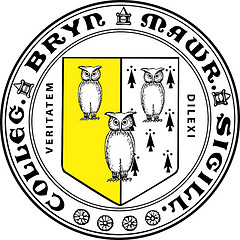How one female school thrives in a tough enviroment
By Aliya Chaudhry
It is a tough time for women’s colleges, but not for Bryn Mawr.
Despite the college’s small size, the declining popularity of women’s colleges and the rising price of college tuition, Bryn Mawr College is thriving, with application numbers increasing each year, according to Marissa Turchi, associate dean of admissions.
Bryn Mawr College is a small liberal arts college for women located outside Philadelphia. It has roughly 1,300 students, with around 370 students enrolling each year, according to the college’s website.
This year, the college enrolled its largest class in history. The class of 2019 had 389 students, according to the college’s website.
The acceptance rate, now at 38 percent, is decreasing, while enrollment is increasing, according to Peaches Valdes, dean of undergraduate admissions.
It is up to the admissions office to process the growing number of applications and select the students who get admitted.
Inside Admissions
Bryn Mawr College receives roughly 2,700 applications a year, according to the college’s website. These applications are read by an admissions team of 20 people.
According to Valdes, of those 20 admissions officers, five are part of outreach and recruitment, three work in campus visits and events and seven work in operations, which is the team that collects application materials.
Admissions officers work year-round. In the fall, they spend three to eight weeks traveling across the globe.
They spend November through March reading applications. In April, the admissions officers focus on admitted students as they visit campus, attend events and select which institution to attend.
Admissions officers travel in the spring to recruit the next class of students. In the summer, they reflect on the past year and start preparing for the next, along with doing more traveling and hosting more events.
Reading applications is just one of the admissions officers’ many responsibilities. But it’s an important one.
“Just like a student is diverse and multi-faceted, so is our process,” said Valdes, who graduated from Bryn Mawr in 1999.
When an application is submitted, it is given to the officer who handles the region the applicant comes from. Each admissions officer is assigned certain territories, and they are responsible for knowing information about schools in those areas and for contacting high school counselors there.
Thirty-five percent of Bryn Mawr’s students come from the Mid-Atlantic while 13 percent come from the West, according to the college’s website. The states from which Bryn Mawr received the most applicants in 2015 were California, Pennsylvania, New Jersey, Massachusetts, New York, Texas and Virginia, according to Turchi.

May Day is one of Bryn Mawr’s many traditions
Each application is read by two to four admissions officers. Some are brought to committee, where the admissions officers discuss the applications at greater length.
Valdes said, “We have multiple people looking at it so it gives us a good sense that when we bring a student to campus we know that we’ve done all the checks and balances in the sense of academic fit, social fit, potential for growth, desire to have a transformative experience.” Continue reading
